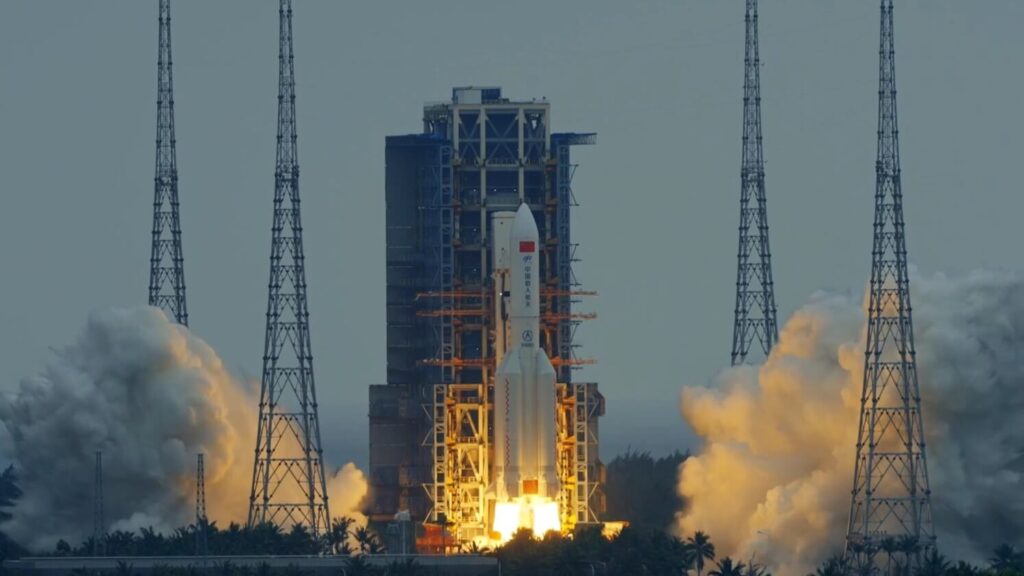After a few days of drifting 300 kilometers above the Earth, the first stage of the Chinese Long March 5B rocket reentered the atmosphere and disintegrated over the Indian Ocean on May 9, 2021.
The rocket carried the first of the three elements of the Chinese Space Station (CSS) into Earth orbit on April 29, 2021. After fulfilling its mission, the first stage of the launcher was left to drift around the planet until it would eventually crash somewhere. As it was getting pulled by the Earth’s gravity, the trajectory and thus the possible crash site of this 18-ton space object was impossible to calculate.
On May 9, 2021, the Chinese Space Agency announced that the launcher disintegrated somewhere above the Indian Ocean, near the Maldives. “After monitoring and analysis, at 10:24 [02:24 GMT] on May 9, 2021, the last-stage wreckage of the Long March 5B Yao-2 launch vehicle has re-entered the atmosphere,” the China Manned Space Engineering Office announced in a statement, claiming that the event presented little risk.
It was the second launch of the Chinese Long March 5B rocket. The first one, launched on May 5, 2020, was also discarded using uncontrolled atmospheric re-entry. While most of its debris was lost at sea off the coast of West Africa, several reports indicate that pieces fell in Côte d’Ivoire, damaging roofs but fortunately not injuring anyone.
Western reaction
The re-entry was confirmed by the US Space Command, though it could not say if the debris impacted land or water.
“Spacefaring nations must minimize the risks to people and property on Earth of re-entries of space objects and maximize transparency regarding those operations,” NASA Administrator Bill Nelson criticized following the re-entry. “It is clear that China is failing to meet responsible standards regarding their space debris.”
The situation could happen again very soon, according to the European Space Agency. “We can expect a similar situation for the next two launches or how many they will do with Long March 5B,” Thomas Reiter, the international coordinator and special advisor to the ESA Director-General told the Insider. “Every time they will launch another module to the station, we would have to look up and try to find out where this object might enter.”
Named Tiangong (“Heavenly Palace”), the CSS will be composed of three modules. A second launch is expected in May 2021. The CSS is planned to be fully operational by 2022.

